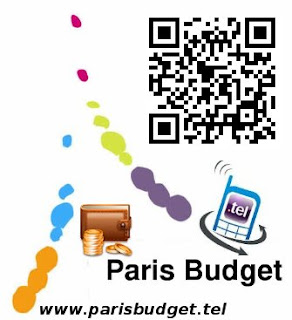
If you're like most people in North America, you probably won't know what the above image represents, even though it is the latest craze being promoted to print service providers and marketeers.
"Matrix Codes," most popularly known as
QR or
Quick
Response codes are essentially bar codes like the ones printed on package goods that are scanned at the merchant's checkout counter. QR codes take the notion a step further because they enable print media and web-enabled mobile media to work together. A QR code is a high-density barcode readable by smart cell phones and simple PC cams. By pointing the camera at the QR symbol, an application on the phone, or PC, opens the individual’s mobile browser and instantly connects them to a designated Web page without them ever having to type in a URL or promotional code - they just point and go. By scanning the codes, one can not only access websites but images, personal information, make phone calls, play a video, and send text messages.
QR codes are already a big part of mobile culture in Japan (where the technology originated in 1994) and South Korea with some 40% of mobile users in Japan regularly using their mobile phones to scan QR codes in advertisements.


The marketing opportunities enabled by QR codes are limitless.
Advertisers, publishers and brand owners can use QR codes to add interactivity to any print media. In Asia (and slowly in the rest of the world) they are being placed on just about everything you could imagine - and some you wouldn't think of, like tattoos and gravestones.

QR codes explained in a clip from the television show CSI: New York.Here are just a few examples of where you can find QR codes being used today:
• Business cards
• Outdoor posters and signage
• Packaging
• Clothing
• Newspapers and magazines
• Point of purchase displays
• Event registration
The reality check - at least for North American marketeersWhile there seems to be a great deal of enthusiasm for the potential applications of QR codes, the state of the technology in North America is akin to the state of the internet for people who don't have a computer, or who do have a computer but have no ISP access. Sure the technology is great, however, from a marketing point of view, you've got to be realistic about your audience.
Today, with QR codes, you're only broadcasting to a small minority of the market:
1) They must have a smart phone or a phone for which QR reader applications are available - not just a phone with a camera. Right away that eliminates some 75% of the cell phone using audience.
2) They must be aware of the significance and value of QR codes. Try asking the technophiles at any cell phone kiosk to see if they have any idea what a QR code is. So ignorance going to remove, IMHO, at least 90% of the 35% of the market that have smart phones. So now you're down to maybe 3% of the market
3) They must download and install the QR software. That's work which many people shy away from. So maybe that cuts out another 50% of the market. So now you are down to maybe 1-2% of the market being able to use QR codes.
4) From a marketing perspective, you have to ask what percentage of that 1-2% of the total market is made up of your target audience (e.g. print specifiers)? 1%, 10%, 50%? I doubt that it's even as much as 1%.
Using a message delivery system that, at best, is accessible by only 1-2% of the total market and likely .001% of a given target market is not a message delivery system that I would count on to deliver a measurable, let alone significant, marketing ROI.
So, use and promote QR codes - but don't expect them to deliver an ROI as an effective marketing/promotional media. At least not today. However, once QR readers are pre-installed on smart phones and the major brands bring more attention to the technology QR coding will rapidly move from hype to "must have."

Fortunately, the cost of entry is zero. You can create your own QR Code for any website, short text message, or other information using any one of the free online code generators like the one available
HERE.


































































































jeparsonssaid...
Hi, Gordon. Really good post. Your caveats about user awareness, smartphone use and installed QR Code reader software are well taken. (Minor correction: Ordinary feature phones with Internet access CAN use 2D codes, but their smaller display sizes, lack of touchscreen UIs and poor multimedia performance make it more problematic than is the case with smartphones.)
The tipping point for this technology is coming sooner than many people expect. Android's and Nokia's default inclusion of reader software will be followed by Apple, HP/Palm and others. Different demographics will "get" the concept at different times, but the wave is most definitely coming.
The short-term fix for many QR Code campaigns is an action item -- usually based on SMS texting -- that lets the user easily install a reader for his or her particular phone. This need will go away eventually, but it has proven effective during the current "chicken-or-egg" stage of the trend.
The real issue is the quality of the mobile Web experience one experiences after scanning a code. Generating a QR Code (or any other type of 2D code) is only the beginning. If the Web landing page is not optimized for mobile devices, or if the overall mobile experience is not an engaging one, then potential customers will only be frustrated. Some companies have already figured this out. Check out Warbasse Design (http://www.warbassedesign.com) for some really good examples of how the print-to-mobile (or even TV-to-mobile) experience can benefit a marketing campaign.
It's a brave new world -- again.
July 23, 2010 10:04 AM